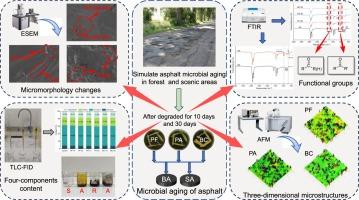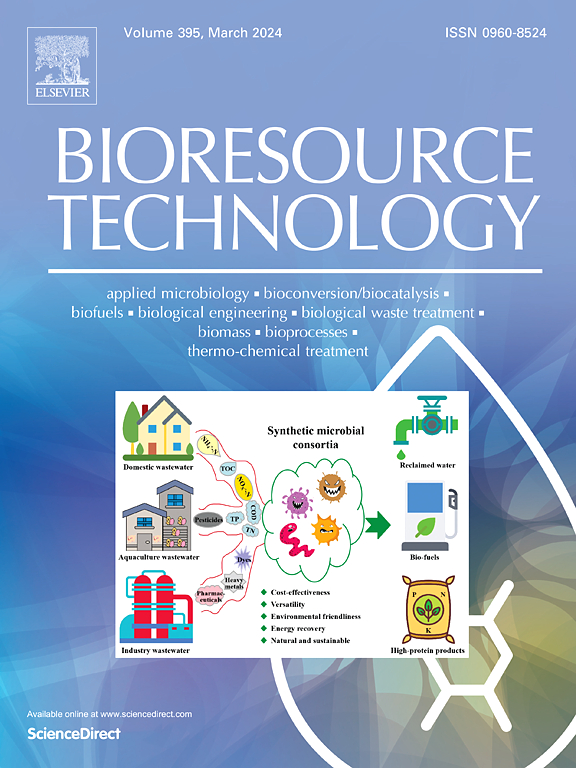Degradation behaviors of asphalt by microorganisms in asphalt pavement structure
IF 9.7
1区 环境科学与生态学
Q1 AGRICULTURAL ENGINEERING
引用次数: 0
Abstract
Pseudomonas and Bacillus are dominant microorganisms to widely distributes in asphalt pavement structure. Microbial degradation leads to asphalt aging, and causes its performance deterioration, reducing the durability of asphalt pavement. To better understand the degradation behaviors of dominant microorganisms on asphalt, and reveals their microbial aging mechanisms on asphalt, the effects of microbial degradation on micromorphology, chemical functional group, component and microstructure of asphalt were discussed. Results indicate that main damages of microbial degradation start from asphalt surface and then permeates into its interior. Microorganisms degrade light components of asphalt as nutrients and decompose them into CO2 and H2O through oxidation reactions, but exhibit limited degradation ability to macromolecular components. Microbial degradation causes the content changes of asphalt components, altering the colloidal structure of asphalt. Microorganisms destroy the continuity of asphalt surface and increase surface roughness of asphalt. This study provides a new insight into microbial aging mechanism of asphalt.

沥青路面结构中微生物对沥青的降解行为。
假单胞菌和芽孢杆菌是广泛分布于沥青路面结构中的主要微生物。微生物降解会导致沥青老化,使其性能下降,降低沥青路面的耐久性。为了更好地了解优势微生物对沥青的降解行为,揭示其对沥青的微生物老化机理,探讨了微生物降解对沥青微观形态、化学官能团、组分和微观结构的影响。结果表明,微生物降解的主要破坏是从沥青表面开始,然后向内部渗透。微生物将沥青中的轻质成分作为营养物质降解,并通过氧化反应将其分解为 CO2 和 H2O,但对大分子成分的降解能力有限。微生物降解会引起沥青成分的含量变化,改变沥青的胶体结构。微生物会破坏沥青表面的连续性,增加沥青表面的粗糙度。这项研究为沥青的微生物老化机理提供了新的见解。
本文章由计算机程序翻译,如有差异,请以英文原文为准。
求助全文
约1分钟内获得全文
求助全文
来源期刊

Bioresource Technology
工程技术-能源与燃料
CiteScore
20.80
自引率
19.30%
发文量
2013
审稿时长
12 days
期刊介绍:
Bioresource Technology publishes original articles, review articles, case studies, and short communications covering the fundamentals, applications, and management of bioresource technology. The journal seeks to advance and disseminate knowledge across various areas related to biomass, biological waste treatment, bioenergy, biotransformations, bioresource systems analysis, and associated conversion or production technologies.
Topics include:
• Biofuels: liquid and gaseous biofuels production, modeling and economics
• Bioprocesses and bioproducts: biocatalysis and fermentations
• Biomass and feedstocks utilization: bioconversion of agro-industrial residues
• Environmental protection: biological waste treatment
• Thermochemical conversion of biomass: combustion, pyrolysis, gasification, catalysis.
 求助内容:
求助内容: 应助结果提醒方式:
应助结果提醒方式:


